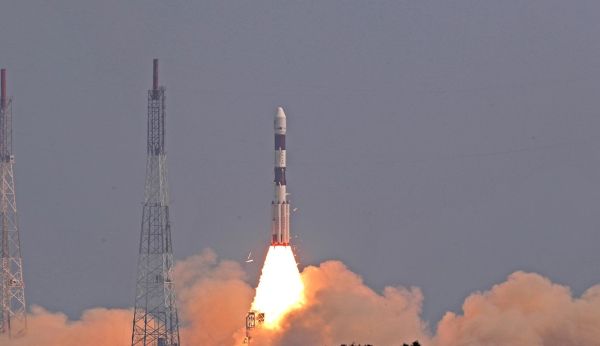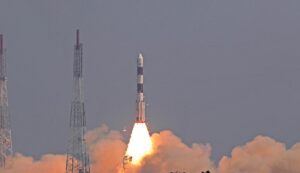
New Delhi: The Ocean Colour Monitor (OCM) sensor on its EOS-06 satellite has recorded phytoplankton concentration globally, according to a statement released by the Indian Space Research Organization (ISRO).

ISRO said in a post on X that the OCM sensor on the EOS-06 measures the concentration of phytoplankton on a worldwide scale. The EOS-06’s Ocean Colour Monitor (OCM) sensor measures the amount of chlorophyll-a (Chl-a) on a global scale every two days. The worldwide product created using data from January to December 2024 is shown in the picture below at a resolution of one kilometer. Observations of ocean color aid in the collection of important data on the biogeochemical variability of oceans on a worldwide scale.
The third-generation satellite of India’s Oceansat series is called EOS-06, or Oceansat-3. It was introduced with improved capabilities to carry on the services offered by Oceansat-2, its predecessor. The satellite is equipped with a number of cutting-edge pieces of equipment to aid in environmental monitoring and ocean research.
The Ocean Colour Monitor (OCM-3) is one of its primary payloads. The Sea Surface Temperature Monitor (SSTM), the Ku-Band Scatterometer (SCAT-3), and ARGOS, a data-collecting system for environmental monitoring, are additional crucial tools.
“The EOS-06 is intended to observe ocean color data, sea surface temperature, and wind vector data for use in oceanography, climatic, and meteorological applications,” according to a prior ISRO statement. Along with land-based geophysical information, the satellite also enables value-added goods like possible fishing zones based on wind speed, SST, and chlorophyll. In Orbit-1, the main satellite (EOS-06) has been split apart.
In order to enable operational applications, the aim is to ensure that wind vector and ocean color data are continuously collected. Scientists can better monitor marine ecosystems and comprehend climate change thanks to this data.
By adding new datasets, such as sea surface temperature and more optical and infrared bands for atmospheric and fluorescence adjustments, the satellite also makes advances.
More precise oceanic research and environmental monitoring are probably going to be facilitated by these improvements. Creating improved algorithms and data products to support scientific research and practical applications is another of EOS-06’s main goals. The goal is to enhance forecasting and analysis about weather, fisheries, and climate trends by improving data processing techniques.
With a separation mass of 1,117 kg, the satellite was launched by ISRO’s U R Rao Satellite Centre (URSC), India, on board the PSLV-C54 rocket. In order for scientists to better understand climate change, marine ecosystems, and weather patterns, this goal is essential to the study of the world’s seas.